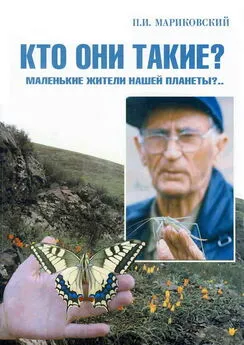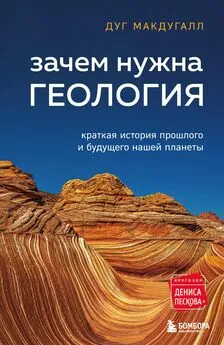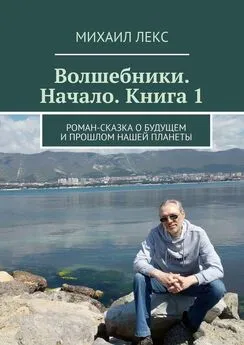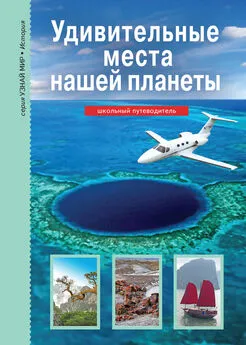Сара Драй - Воды мира. Как были разгаданы тайны океанов, атмосферы, ледников и климата нашей планеты
- Название:Воды мира. Как были разгаданы тайны океанов, атмосферы, ледников и климата нашей планеты
- Автор:
- Жанр:
- Издательство:Альпина нон-фикшн
- Год:2021
- Город:Москва
- ISBN:9785001394938
- Рейтинг:
- Избранное:Добавить в избранное
-
Отзывы:
-
Ваша оценка:
Сара Драй - Воды мира. Как были разгаданы тайны океанов, атмосферы, ледников и климата нашей планеты краткое содержание
Рассказывая о ее становлении, Сара Драй обращается к историям этих людей – историям рискованных приключений, бунтарства, захватывающих открытий, сделанных в горных экспедициях, в путешествиях к тропическим островам, во время полетов в сердце урагана. Благодаря этим первопроходцам человечество сумело раскрыть тайны Земли и понять, как устроена наша планета, как мы повлияли и продолжаем влиять на нее.
Понимание этого особенно важно для нас сегодня, когда мы стоим на пороге климатического кризиса, и нам необходимо предотвратить наихудшие его последствия.
Воды мира. Как были разгаданы тайны океанов, атмосферы, ледников и климата нашей планеты - читать онлайн бесплатно ознакомительный отрывок
Интервал:
Закладка:
345
Более подробно о культурной истории прогнозирования погоды в Америке см.: Jamie Pietruska , Looking Forward: Prediction and Uncertainty in Modern America (Chicago: University of Chicago Press, 2017).
346
Результаты исследования этого ледяного керна: Willi Dansgaard, S. J. Johnsen, and C. C. Langway Jr., «One Thousand Centuries of Climatic Record from Camp Century on the Greenland Ice Sheet,» Science 166, no. 3903 (1969): 377380; Richard Alley, The TwoMile Time Machine: Ice Cores, Abrupt Climate Change, and Our Future (Princeton, NJ: Princeton University Press, 2000).
347
Dansgaard, Johnsen, and Langway, «One Thousand Centuries,» 377–380.
348
Об истории климатологии см.: Woodward, The Ice Ages , chapter 8; H. Le Treut, R. Somerville, U. Сubasch, Y. Ding, C. Mauritzen, A. Mokssit, T. Peterson, and M. Prather, «Historical Overview of Climate Change,» in Climate Change 2007: The Physical Science Basis, Contribution of Working Group I to the Fourth Assessment Report of the Intergovernmental Panel on Climate Change , ed. S. Solomon, D. Qin, M. Manning, Z. Chen, M. Marquis, K. B. Averyt, M. Tignor, and H. L. Miller (Cambridge and New York: Cambridge University Press, 2007); Chris Caseldine, «Conceptions of Time in (Paleo)Climate Science and Some Implications,» WIREs Climate Change 3 (2012): 329–338; R. W. Fairbridge, «History of Paleoclimatology,» in Encyclopedia of Paleoclimatology and Ancient Environments , ed. V. Gornitz (New York: Springer, 2009), 414–428; Matthias Dörries, «Politics, Geological Past, and the Future of Earth,» Historical Social Research 40, no. 2 (2015): 22–36.
349
Dansgaard, Johnsen, and Langway, «One Thousand Centuries,» 380.
350
Spencer Weart, «The Rise of Interdisciplinary Climate Science,» PNAS 110 (2013): 3658.
351
Wallace Broecker, «Absolute Dating and the Astronomical Theory of Glaciation,» Science 151 (1966): 299–304.
352
Wallace Broecker, «The Carbon Cycle and Climate Change: Memoirs of My 60 Years in Science,» Geochemical Perspectives 1 (2012): 276–277; Wallace Broecker, «When Climate Change Predictions Are Right for the Wrong Reasons,» Climatic Change 142 (2017): 1–6; Wallace Broecker, The Great Ocean Conveyor: Discovering the Trigger for Abrupt Climate Change (Princeton, NJ: Princeton University Press, 2010), 19–25.
353
George Kukla, R. K. Matthews, and J. M. Mitchell, «The End of the Present Interglacial,» Quaternary Research 2, no. 3 (1972): 261–269.
354
О роли, которую играли советские климатологи в дебатах об использовании аналогов, см.: Jonathan Oldfield, «Imagining Climates Past, Present and Future: Soviet Contributions to the Science of Anthropogenic Climate Change, 1953–1991,» Journal of Historical Geography 60 (2018): 41–51.
355
Barry Saltzman, Dynamical Paleoclimatology: Generalized Theory of Global Climate Change (San Diego, CA: Academic Press, 2002).
356
Alley, Two-Mile Time Machine , 21; J. Jouzel, «A Brief History of Ice Core Science Over the Last 50 Years,» Climate of the Past Discussions 9 (3 July 2013): 3711–3767.
357
Интервью автора, 10 апреля 2015 г.
358
Недавно были предложены другие объяснения осцилляций Дансгора – Оэшгера, в частности связанные с морским льдом или тропическими процессами, тогда как Карл Вунш предположил, что эти осцилляции могут представлять собой не глобальные, а локальные или региональные изменения, вызванные сдвигами ветрового поля вследствие взаимодействия с ледяным покровом. Amy Clement and Larry Peterson, «Mechanisms of Abrupt Global Change of the Last Glacial Period,» Reviews of Geophysics 46 (2008): 1–39; Carl Wunsch, «Abrupt Climate Change: An Alternative View,» Quaternary Research 65 (2006): 191–203.
359
. Global Change: Impacts on Habitability: A Scientific Basis for Assessment: A Report by the Executive Committee of a Workshop held at Woods Hole, Massachusetts, June 21–26, 1982 , submitted on behalf of the executive committee on 7 July 1982 by Richard Goody (Chairman), NASA and Jet Propulsion Lab. Также см.: Earth Observations from Space: History, Promise, and Reality (Washington, DC: National Academies Press, 1995).
360
Global Change, 3–4.
361
. Toward an Understanding of Global Change: Initial Priorities for US Contributions to the International GeosphereBiosphere Program (Washington, DC: National Academies Press, 1988), v.
362
. Earth System Science: A Closer View , Report of the Earth System Sciences Committee, NASA Advisory Council (Washington, DC: NASA, 1988), 12.
363
Схема, ставшая известной как схема Бретертона, предположительно была разработана Берриеном Муром, будущим руководителем Международной геосферно-биосферной программы; см.: Sybil Seitzinger et al., «International GeosphereBiosphere Programme and Earth System Science: Three Decades of Co-Evolution,» Anthropocene 12 (December 2015): 3–16. Слова Берриена Мура; см.: «Berrien Moore, Earth System Science at 20,» Oral History Project, Edited Oral History Transcript, Berrien Moore III, interviewed by Rebecca Wright, National Weather Center, Norman, OK, 4 April 2011.
364
. Earth System Science , 19.
365
Gregory Good, «The Assembly of Geophysics: Scientific Disciplines as Frameworks of Consensus,» Studies in the History and Philosophy of Modern Physics 31, no. 3 (2000): 259–292.
366
Sybil P. Seitzinger, Owen Gaffney, Guy Brasseur, Wendy Broadgate, Phillipe Ciais, Martin Claussen, Jan Willem Erisman, Thorsten Kiefer, Christiane Lancelot, Paul S. Monks, Karen Smyth, James Syvitski, and Mitsuo Uematsu, «International GeosphereBiosphere Programme and Earth System Science: Three Decades of CoEvolution,» Anthropocene 12 (2015): 3–16.
367
. Earth System Science , 1.
368
Ibid., 5.
369
Ibid., 15 and 10.
370
Juergen Wiechselgartner and Roger Kasperson, «Barriers in the SciencePolicyPractice Interface: Toward a KnowledgeAction – System in Global Environmental Change Research,» Global Environmental Change 20 (May 2010): 276.
371
H. H. Lamb and M. J. Ingram, «Climate and History: Report on the International Conference on 'Climate and History,' Climatic Research Unit, University of East Anglia, Norwich, England, 8–14 July 1979,» Past & Present 88, no. 1 (1 August 1980): 137.
372
T. M. L. Wigley, M. J. Ingram, and G. Farmer, eds., Climate and History: Studies in Past Climates and Their Impact on Man (Cambridge: Cambridge University Press, 1985), 4.
373
Rudwick, Earth's Deep History , 4.
374
Ibid.
375
Появление этого термина и соответствующей группы специалистов можно датировать по выходу первого номера журнала «Динамика климата» в 1986 г.
376
Об истории программы семинаров по геофизической гидродинамике и другую полезную информацию см.: http://www.whoi.edu/page.do?pid=110017
377
В 1990 г., когда был опубликован первый доклад МГЭИК, пространственное разрешение (размер сетки) составлял около 500 км 2. Расчетная сетка распространяется горизонтально по всей земле и вверх, на всю атмосферу. Из-за очень малой плотности атмосферы по сравнению с поверхностью планеты она нарезается еще мельче – обычно с шагом в 1 км. К 1996 г. горизонтальное разрешение сократилось вдвое – до 250 км 2, к 2001 г. – до 180 км 2, а к 2007 г. – до 110 км 2(к 2020 г. – до 10 км 2. – Прим. науч. ред .).
378
. https://eo.ucar.edu/staff/rrussell/climate/modeling/climate_model_resolution.html
379
Nadir Jeevanjee, «A Perspective on Climate Model Hierarchies,» Journal of Advances in Modeling Earth Systems 9, no. 4 (August 2017): 1760.
380
См., напр.: David Ferreira, John Marshall, Paul O'Gorman, and Sara Seager, «Climate at HighObliquity,» Icarus 243 (2014): 236–248.
381
Nadir Jeevanjee, Pedram Hassanzadeh, Spencer Hill, and Aditi Sheshadri, «A Perspective on Climate Model Hierarchies,» Journal of Advances in Modeling Earth Systems 9, no. 4 (2017): 1760–1771.
382
Под антиципацией понимается предвосхищение, предугадывание, представление о предмете или событии, возникающее до акта их восприятия, ожидание наступления события. – Прим. пер.
383
Caitlin De Silvey, Simon Naylor, and Colin Sackett, eds., Anticipatory History (Axminster, Devon: Uniform Books, 2011).
384
Один из примеров этого подхода см.: Alessandro Antonello and Mark Carey, «Ice Cores and the Temporalities of the Global Environment,» Environmental Humanities 9, no. 2 (2017): 181–203.
385
Mike Hulme, Suraje Dessai, Irene Lorenzoni, and Donald Nelson, «Unstable Climates: Exploring the Statistical and Social Constructions of 'Normal' Climate,» Geoforum 40 (2009): 197–206.
386
См., напр.: Gisli Palsson, Bronislaw Szerszynski, Sverker Sörlin, John Marks, Bernard Avril, Carole Crumley, Heide Hackmann, Poul Holm, John Ingram, Alan Kirman, Mercedes Pardo Buendía, and Rifka Weehuizen, «Reconceptualizing the 'Anthropos' in the Anthropocene: Integrating the Social Sciences and Humanities in Global Environmental Change Research,» Environmental Science & Policy 28 (2013): 3–13.3.
Читать дальшеИнтервал:
Закладка:










